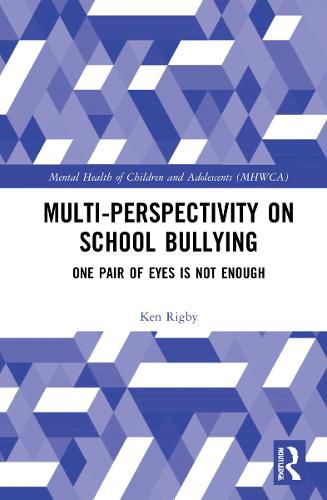Readings Newsletter
Become a Readings Member to make your shopping experience even easier.
Sign in or sign up for free!
You’re not far away from qualifying for FREE standard shipping within Australia
You’ve qualified for FREE standard shipping within Australia
The cart is loading…






Multiperspectivity on School Bullying is unique in providing a comprehensive account of school bullying from the perspectives of schools, teachers, parents, students and institutional authorities. It identifies diverse viewpoints and discusses their implications for addressing bullying and thereby improving the mental health and well-being of children.
Drawing on findings from studies conducted in a wide range of countries, including those undertaken by the author in his own country, Australia, this book examines experiences of bullying and debates around how bullying can be best understood, managed and discouraged. It outlines what is needed before an agreed understanding of the problem can be reached and more effective anti-bullying programs devised and implemented. The book examines both historical and cultural factors relating to bullying and violence; major theoretical and research perspectives on bullying; views of different social groups affected by bullying; and how different institutional authorities view school bullying. It highlights the need for a multiperspectivity approach to bullying, taking into account and evaluating a variety of viewpoints that are currently held.
This book will be of great interest to academics, researchers and students in the fields of bullying, wellbeing and mental health in schools. It will also be valuable reading for educational leaders around the globe.
$9.00 standard shipping within Australia
FREE standard shipping within Australia for orders over $100.00
Express & International shipping calculated at checkout
Multiperspectivity on School Bullying is unique in providing a comprehensive account of school bullying from the perspectives of schools, teachers, parents, students and institutional authorities. It identifies diverse viewpoints and discusses their implications for addressing bullying and thereby improving the mental health and well-being of children.
Drawing on findings from studies conducted in a wide range of countries, including those undertaken by the author in his own country, Australia, this book examines experiences of bullying and debates around how bullying can be best understood, managed and discouraged. It outlines what is needed before an agreed understanding of the problem can be reached and more effective anti-bullying programs devised and implemented. The book examines both historical and cultural factors relating to bullying and violence; major theoretical and research perspectives on bullying; views of different social groups affected by bullying; and how different institutional authorities view school bullying. It highlights the need for a multiperspectivity approach to bullying, taking into account and evaluating a variety of viewpoints that are currently held.
This book will be of great interest to academics, researchers and students in the fields of bullying, wellbeing and mental health in schools. It will also be valuable reading for educational leaders around the globe.